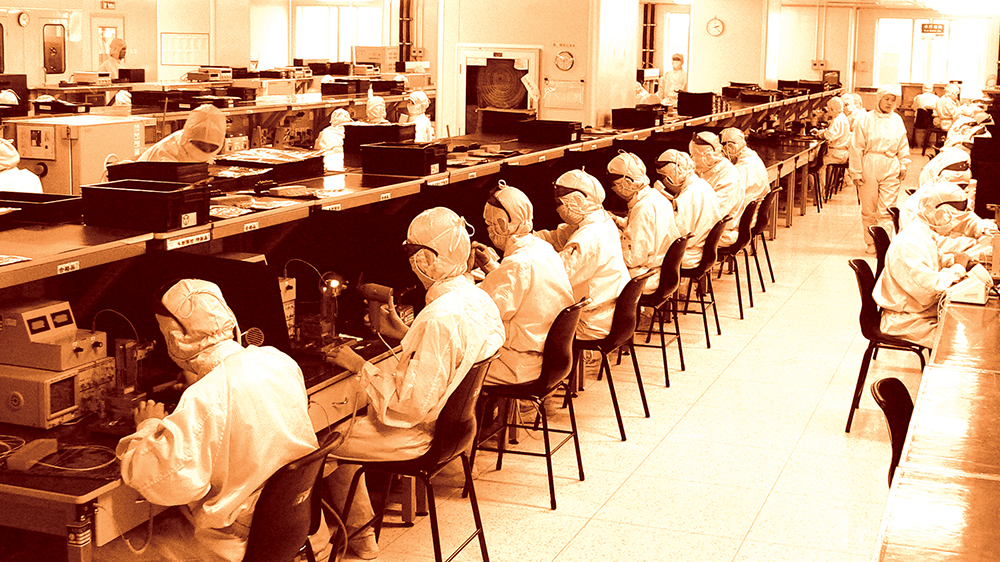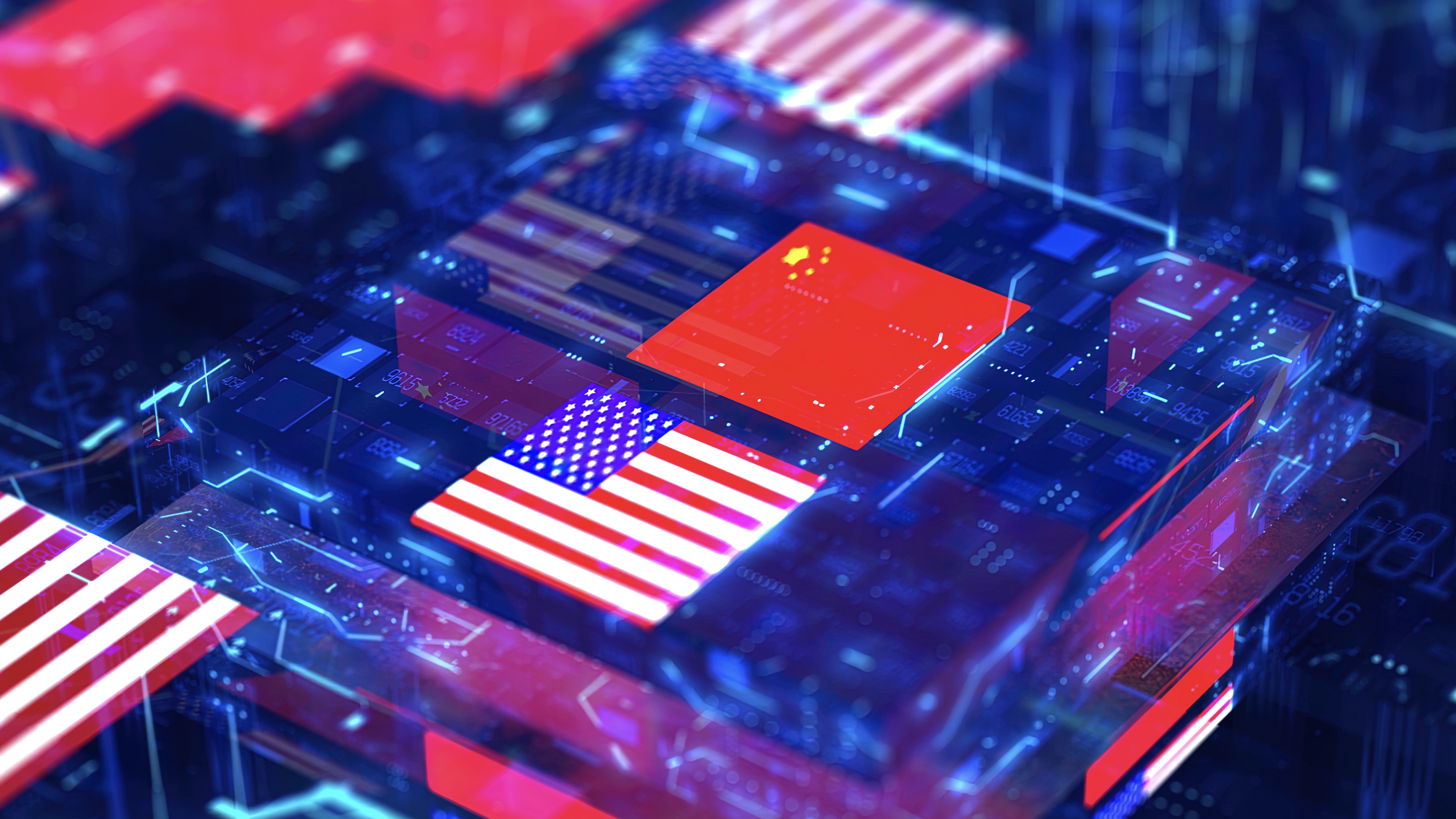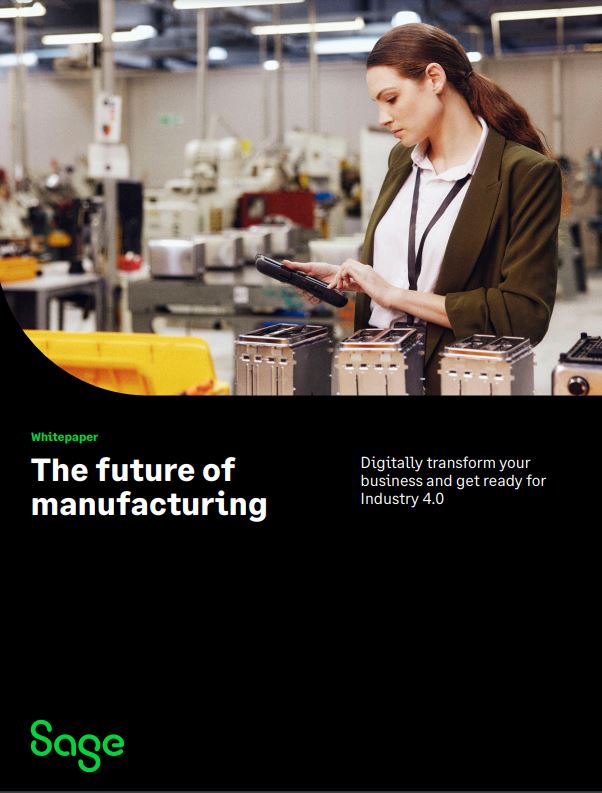Can tech survive without China?
Most tech is made in China. What happens when it can’t – or won’t – make our gadgets?


The Foxconn campus in Zhengzhou employs 200,000 workers, which is about the same population of Peterborough. It covers a staggering 1.4 million square metres, so is four times the size of the cathedral city. The factories are normally bustling, busy assembling phones for Apple, Huawei and Samsung. But as news of the novel coronavirus spread at the beginning of February, work at such plants was abruptly halted on Chinese government orders.
Many workers had returned to their hometowns for Lunar New Year celebrations and were told not to return until the epidemic waned; when they did come back, those from affected areas were forced into quarantine for up to two weeks, leaving production lines understaffed and employees from Hubei province and others with coronavirus locked down in company apartments.
For the tech industry, this is a huge problem: More than half of the world’s smartphones are assembled in China, along with 90% of the laptops, most of our wearables, key components and parts such as display panels. Only a few weeks into the shutdowns, Apple issued a profit warning, saying that iPhone supply would be “temporarily constrained”. Microsoft, Lenovo and HP have subsequently issued warnings to their investors, as have hundreds of other companies across all industries. Business had caught a nasty fever.
Coronavirus is an unexpected disruption, but it’s not the only one. If you think the trade war between the US and China has wreaked havoc on the rollout of 5G then bear in mind that it’s just the first skirmish, with tariffs likely to further hit tech production. And that’s just a trade war: the way 2020 has started, an actual war doesn’t seem impossible. In the worst-case scenario, whatever that might be, have we put too much of our technology production in China’s hands?
Made in China
Before we look at those worst-case scenarios, it’s worth understanding how we got here. Two decades ago, China was a minor player in the global economy, with a 6% share of global manufacturing value in 2001. The same year, something happened that changed the fortunes of the Asian giant: the US backed China in its bid to join the World Trade Organization.
The aim was to open up a new market for American-made goods, but instead China’s low-cost labour helped manufacturing work flood into the country. China becoming the world’s factory coincided rather neatly with the boom in smartphones, sparked by the 2007 launch of the iPhone. Since then, China has climbed from its 6% share of global manufacturing to 28% – ten points ahead of the US.
“Basically, all electronic products are at least partially made in China, primarily due to cheap labour,” says Ray Wang, an analyst at TrendForce. “Also, their upstream supply chains are located in domestic China.”
Get the ITPro daily newsletter
Sign up today and you will receive a free copy of our Future Focus 2025 report - the leading guidance on AI, cybersecurity and other IT challenges as per 700+ senior executives
90% of laptops are produced in China, Wang explains, with all of the major manufacturers basing their production in the country. For smartphones, China (including Hong Kong) is responsible for 60% of global exports – and that doesn’t include the handsets it produces for its domestic market, the largest in the world.
But China makes so much more. The bulk of smartwatches and game consoles are made in the country. It’s also home to much of the world’s TV panel production, semiconductor and memory factories, as well as key components for the whole of the tech industry such as batteries, fibre optic cables and LEDs. If you own a piece of technology, odds are that it’s been at least partially sourced, assembled or manufactured in China.
So, when the country takes a few weeks off, tech has a big problem.
The wrong type of virus
Apple was the canary in the coal mine when it came to coronavirus in China. On 17 February, three weeks after the country quarantined the city of Wuhan, the company issued a profit warning that said supply and sales of iPhones would be hampered by the epidemic, as the smartphone is not only manufactured in China but the country makes up a good slice of its consumer sales too.
As Apple noted at the time, the first and most important concern with the outbreak is public health, not the manufacture of iPhones, and that shutting down factories to try to stop the spread was a necessary move. But the production halt has given the tech industry a sharp reminder of how reliant it is on China for everything from assembly to R&D, raw materials to finished products.
Foxconn, the firm that assembles iPhones alongside other products, was forced to close some of its factories at the end of January. Company chairman Liu Young-way said in a call with investors that Foxconn hoped to be running at full capacity again by the end of March and while it’s not clear if that has been achieved, the company did say it expects to be able to manufacture Apple’s latest 5G enabled smartphones as it would have before the coronavirus outbreak.
It should be noted that production lines don’t run all year round in China anyway. Many were already closed or on reduced operation because of the Lunar New Year, which sees citizens travel to visit family. And that’s good news for the tech industry. “We were fortunate in the timing,” says Kevin Anderson, senior analyst at Omdia. “Because of the Lunar New Year… people plan for that, they build ahead and stock components. Most of them shut down for about a week. Because all of this happened at the beginning of the Lunar New Year, it was basically an extension of that shutdown.” Plus, the first quarter is the quietest for the industry; if the outbreak had happened in the third quarter, it would have hurt even more.
RELATED RESOURCE

The IT Pro Podcast: Can tech survive Coronavirus?
COVID-19 is sweeping the globe, but how much will it affect the tech industry?
Of course, China isn’t only a producer – it’s a major consumer. Apple’s profit warning wasn’t limited to iPhone shortages, but noted that closing stores had caused local sales to fall. More widely, the pandemic could spark a recession that would naturally hit technology industry revenue too. “The sales that have been lost in the first quarter may be partially recovered in the rest of the year, but there’s no guarantee this will happen,” explains Marina Koytcheva, an analyst at CSS Insight. “The disruption affects not just the phone industry, but the whole economy. The question now is what will happen with macro-economic growth in China and the world.”
That could make the factory closures look like a mere blip. “Shops will reopen, people will return to work,” she said. “But the economic consequences of this disruption are still unclear at this point.”
Tracking the impact
While the full impact of COVID-19 on the industry isn’t yet clear, in early March analyst firm TrendForce tried to quantify the disruption so far, predicting the number of smartphones shipped in the first quarter of the year would fall by 10%, smartwatches by 16% and monitors by 5%. But those figures belie the complexity involved in modern supply chains and the far reach of China’s manufacturing.
As Anderson notes, there’s more to tech supply chains than components. To ship a smartphone you’ll also need connectors, packaging and boxes – and those are all labour-intensive processes – as well as customs and logistics. “The whole thing can slow down because all it takes is one part that’s not there before you can’t do the build,” said Anderson.
Components such as semiconductors and memory are likely to be hit less hard, TrendForce predicted, because of the higher degree of automation used in their manufacture – one upside to robots replacing human workers is they don’t get sick. However, such parts could be left sitting at customs if human border guards aren’t around to approve their export, leading to production delays in other countries.
Another branch of technology facing disruption is 5G installations, as most of the world’s fibre optics production is based in Wuhan – home to manufacturers Fiberhome, YOFC and Accelink. That locked-down city is also home to a large slice of printed circuit board (PCB) production – a key component in base stations. Companies in other countries make these components, but shortages could lead to price hikes and procurement delays.
Smartwatches and other wearables, including headphones, are mostly made in the provinces of Guangdong, Jiangsu and Zhejiang, all of which have seen factory shutdowns. TrendForce expects to see product launches deferred in the first half of the year, though the analyst firm notes that the biggest launches tend to happen at the end of the year, allowing time for production to catch up.
Perhaps the worst hit sector, says TrendForce, will be laptops, in particular because of shortages of display panels. February’s shipment forecast for laptops fell from 10.8 million units to 5.7 million units, down 48% year-on-year, the analyst firm reported. If the spread of the coronavirus can be contained, allowing production to rebound in subsequent months, first-quarter laptop shipments will fall by about 25%, it predicted. If the epidemic halts production further, those shipments will take a further nosedive. However, the problem isn’t only assembly – there are issues further up the supply chain, constraining the availability of parts such as hinges, batteries and necessary metal ores.
Shortages on the shelves?
What impact will these widespread tech shortages have on consumers? Prices may or may not increase, but we can expect fewer sales and discounts. Shelves won’t be empty of smartphones or laptops, but launches may be pushed back by months, while some models may only be available in limited quantities.
“I think in the short term you’re definitely going to see price increases or at least fewer discounts,” Anderson predicts. “I expect you will see less discounting and firming up of pricing throughout the second quarter.”
Anderson notes that the first quarter of the year often sees the setup and testing of production lines for new devices, and right now that’s not happening. “That will mean the launch of some products may push out,” he said. A phone launch set for September may not happen until December, for example. “That happened to [Apple] a couple years ago where they had some difficulty making components that went into their latest phone and they did push back the launch date,” he notes.
Such disruption will be particularly problematic for laptops designed for education, as TrendForce notes that February is traditionally when bidding wars for production of devices such as Chromebooks begin. Due to the shutdown, manufacturers and brands may eschew production of lower-priced budget laptops in favour of higher-priced models; if you can only make so many laptops, you’re going to focus on those with the greatest margins. That means schools and parents may have a harder time finding the right kit for students come September, but, again, it depends on the length of outages and the ability of manufacturers to catch up once they’re back online.
Beyond the bug
The coronavirus is a perfect example of disruption in the tech industry caused by an overdependence on China – but it’s hardly the only one. The fervent political debate over whether Chinese networking giant Huawei should be allowed to supply components to the UK’s 5G network is another case in point. The security concerns were stoked by the US-China trade war, meaning that an undiplomatic tweet threatening to raise tariffs on Chinese goods sent by US president Trump is enough to set back our mobile networks.
Huawei is outright banned in the US, but prime minister Boris Johnson has approved the use of Huawei networking products in some aspects of the UK 5G network. Despite that decision, critics continue to argue that the Chinese firm can’t be trusted – although experts say that’s more of a political standpoint than a security one. “It’s become very zero-sum in terms of risk management and cyber security,” says James Sullivan, head of cyber research at the Royal United Services Institute (RUSI). “Some people are saying there’s no way you can manage risk from Huawei in 5G infrastructure, and that’s just not true. It’s really important not to dismiss those previous measures that historically isolated and localised risks in telecommunications networks.”
Given the political debate and the potential risk to security, why not just use a company that’s not Chinese? Well, there simply aren’t enough 5G suppliers. “There are just so few experts in this space and so few suppliers to do this work,” Sullivan said. In Europe, Nokia, Ericsson and Huawei can supply this necessary equipment. There’s also ZTE, but it’s owned by the Chinese government. With 4G and 5G networks, the UK requires at least two vendors supplying equipment. “If you cut Huawei out, you’ve got no competition,” says Sullivan.
This is the result, Sullivan says, of industrial strategy decisions over the past 20 years. “5G’s become one instance of a much wider set of issues relating to the globalisation of technology,” he said. “It’s probably just woken people up and raised questions about the national strategy relating to vendor diversity.”
In short, we need more 5G suppliers that are based in countries we trust. The other alternative is to develop “technological sovereignty”, which means developing such technologies and industries ourselves – or supporting those in countries with which we’re aligned politically. The US has tried to push its own home-grown networking companies to compete more effectively with Huawei, with both the White House and intelligence agencies urging US giant Cisco to build the necessary components and saying that the technologies should be open-sourced to encourage an alternative to manufacturing in China.
This trade war and cybersecurity concerns are two reasons why such alternatives may be necessary. “If you’re voicing displeasure about the actions in China – and there are a lot of reasons that might be legitimate, [such as] political, economic and human-rights considerations – they may end up being factors that lead to a decision to exclude China from selling technology and providing technical infrastructure,” Sullivan said.
Thus far, the discussion has centred on 5G, but there are other fields of technology where China could dominate in the future, notably automation or AI. Sullivan argues that we need to identify advanced technological areas now that will need vendor diversity or sovereign technology, then develop an industrial strategy to make it happen. Otherwise, we’ll endlessly repeat the same conversations about whether we can trust a Chinese technology or company, without any real alternatives.
Triggering change
Coronavirus and the trade war have been a wake-up call to the industry, a sign that diversity in production is necessary. Indeed, a shift is already happening. “There are a number of reasons why manufacturing is very strong in China, as well as product development and research as well,” says CSS Insight’s Koytcheva. “The trade tensions between US and China are one reason why some companies are looking to diversify their manufacturing. Of course, costs in China are no longer as low as they were at the start of the century.”
Sony shifted production out of China to Thailand last year, while Google and Samsung have departed for Vietnam, which has low labour costs and the manufacturing skills, but with fewer political concerns. Plus, local Chinese companies such as Huawei and Xiaomi have dominated the local market, giving less reason to stick around.
However, some factories aren’t so easy to move. Semiconductor fabrication is complex and setting up assembly lines can cost billions; firms may decide to set up elsewhere in the future, but for now it’s difficult and expensive to make the shift. Even over the long term, there are supply issues beyond manufacturing. “Although Southeast Asia or India may replace China as the next hotbed of notebook production, that fact that metal ore production, the farthest upstream part of the supply chain, is located in China poses certain difficulties for Southeast Asia or India to supplant China in this regard,” Wang says.
While diversity in manufacturing has its appeal, it’s expensive to run multiple factories in different locations. “Keeping more than one source qualified and ready [to manufacture] can be an additional cost,” Anderson says. “Some companies have thought the cost was too high, but will they continue to see it that way?” The coronavirus, trade wars and ongoing political tension might just be enough to change their minds.
Freelance journalist Nicole Kobie first started writing for ITPro in 2007, with bylines in New Scientist, Wired, PC Pro and many more.
Nicole the author of a book about the history of technology, The Long History of the Future.
-
 Salesforce wants technicians and tradespeople to take AI agents on the road with them
Salesforce wants technicians and tradespeople to take AI agents on the road with themNews Salesforce wants to equip technicians and tradespeople with agentic AI tools to help cut down on cumbersome administrative tasks.
By Ross Kelly Published
-
 ITPro NAB Best of Show 2025 Awards winners unveiled
ITPro NAB Best of Show 2025 Awards winners unveiledThe best of the best have received accolades for their innovation at this year's NAB show in Las Vegas...
By ITPro Published
-
 UK tech profit warnings at highest level since pandemic
UK tech profit warnings at highest level since pandemicNews Sector uncertainty has continued to dampen profits, with the percentage of firms delisting also having risen
By Rory Bathgate Published
-
 What the US-China chip war means for the tech industry
What the US-China chip war means for the tech industryIn-depth With China and the West at loggerheads over semiconductors, how will this conflict reshape the tech supply chain?
By James O'Malley Published
-
 The Forrester Wave™: Third party risk management platforms
The Forrester Wave™: Third party risk management platformsWhitepaper The 12 providers that matter the most and how they stack up
By ITPro Published
-
 Apple to shift MacBook production to Vietnam in further step away from China
Apple to shift MacBook production to Vietnam in further step away from ChinaNews The plan has been reportedly been worked on for two years, with the tech giant already having a test production site in the country
By Zach Marzouk Published
-
 Food and beverage traceability
Food and beverage traceabilityWhitepaper Understanding food and beverage manufacturing compliance and traceability
By ITPro Published
-
 Ensuring compliance with the National Bioengineered Food Disclosure Standard (NBFDS)
Ensuring compliance with the National Bioengineered Food Disclosure Standard (NBFDS)Whitepaper How food manufacturers can enhance traceability with technology to be compliant
By ITPro Published
-
 The future of manufacturing
The future of manufacturingWhitepaper Digitally transform your business and get ready for Industry 4.0
By ITPro Published
-
 Microsoft targets optimised supply chain investments with new platform launch
Microsoft targets optimised supply chain investments with new platform launchNews Microsoft's new Supply Chain Platform fully harnesses Microsoft cloud to help businesses improve supply chain agility and resilience
By Daniel Todd Published
